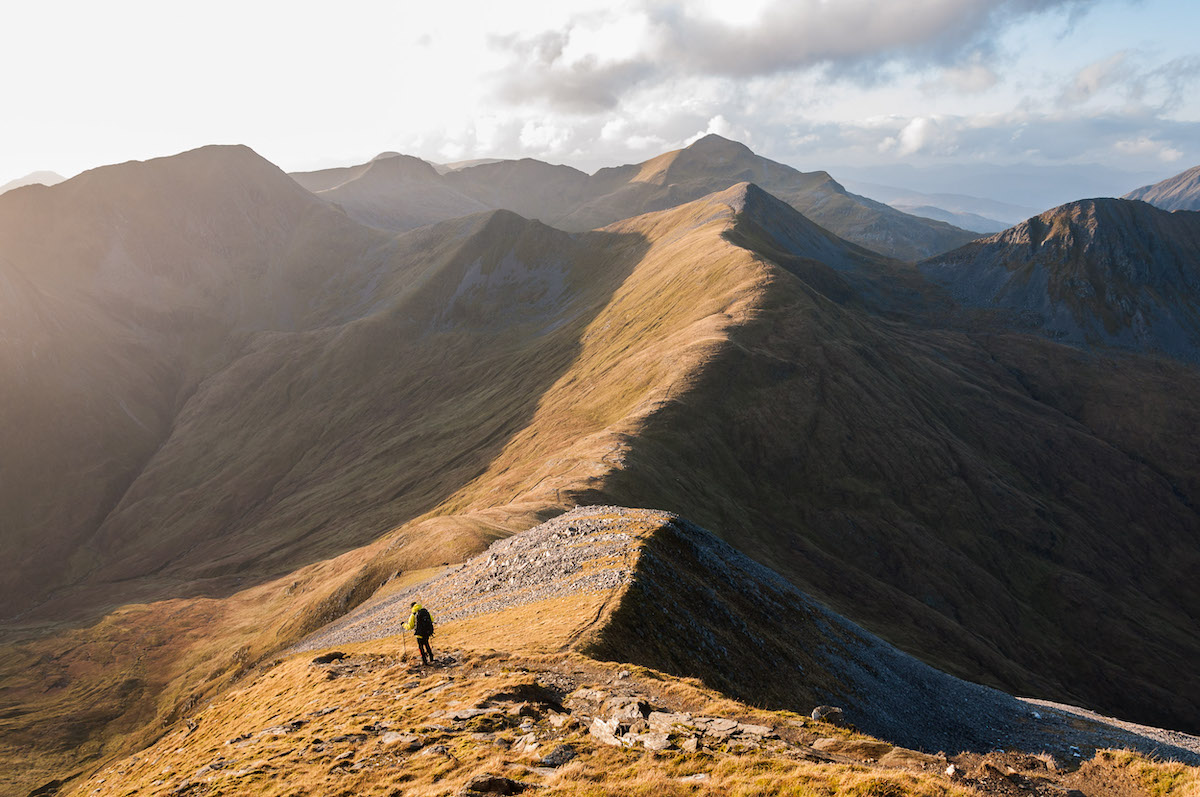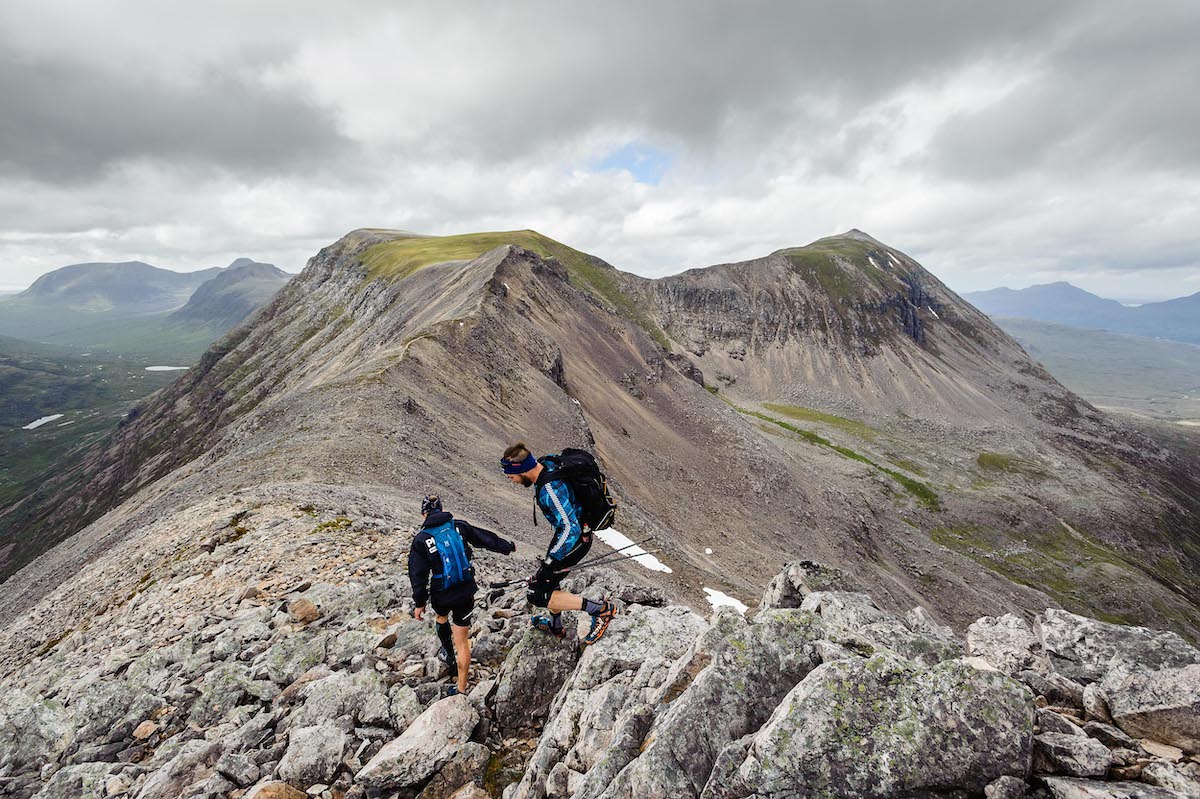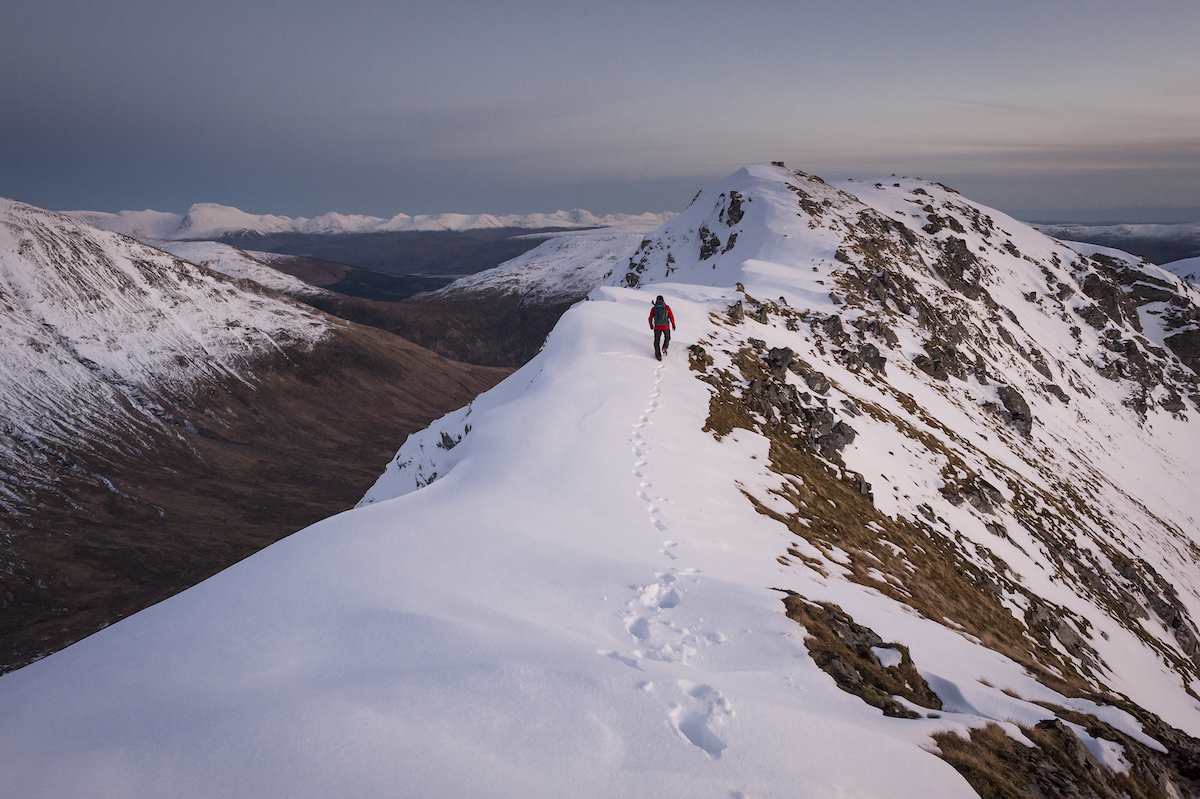Colin Henderson is a photographer from Edinburgh, Scotland, who specializes in outdoor and adventure sports and active lifestyle. His photography stems in large part from his passion for spending time outdoors going on long treks or cycling in the Scottish foothills and mountains. He says he loves photography most when it is a challenge. Focusing on illustrating landscapes, especially mountain landscapes – which often include people or athletes in the setting – he says he uses a “creative blend of composition and color, lens choice and light to produce striking and emotive images” that he sells as fine art prints or licenses to commercial and editorial clients. Some of the many diverse brands and publications he has worked with include National Geographic, Outside, Outdoor Photography, Runner’s World, Backpacker, the British Mountaineering Council, and BBC Adventure Show.
A contributing editor to Patagon Journal, Henderson has visited Patagonia on several occasions over the past two decades and is the author of the Los Glaciares National Park Travel & Trekking Guide.
As part of a special series of interviews with some of the panel of judges for the 2023 Patagonia Photo Contest, Patagon Journal recently interviewed Henderson.
You wrote a guidebook to Los Glaciares National Park in Argentine Patagonia. What are some of your favorite places in the park to photograph?
My favorite place to photograph in Los Glaciares National Park is Glacier Fitz Roy Norte. The glacier is accessed via Paso del Cuadrado, a small pass high above Piedra del Fraile that leads to the remote west face of Cerro Chaltén and the frankly awesome 1600-meter high Supercanaleta, also known as the Super Couloir — the route of the second ascent of Chalten, by Argentinian climbers Carlos Comesaña and José Luis Fonrouge, in 1965. If you don’t have the technical skills to be on a glacier, just visiting the pass itself provides you with mighty views of the great rock walls of Aguja Guillaumet, Aguja Mermoz and Cerro Chaltén to your left and the three Torres – Cerro Torre, Torre Egger and Cerro Standhardt in front of you, and the glacier far below.
Another great place for mountain views is Circos de los Altares, an even more remote glacial cirque situated beneath the ice-encrusted west face of Cerro Torre. To reach the cirque requires a technically demanding trek up Marconi Glacier out onto the Southern Patagonian Ice Cap, a great ocean of ice sweeping west from the southern coast of Chile to its border with Argentina. Up to 650 meters thick and almost 13,500 kilometers square, the ice cap is one of the largest expanses of ice outside the polar regions.
Both locations appeal to me because of the challenge required in getting there and spectacular views, which is what makes me passionate about photography.


In the current edition of Patagon Journal you have a photographic essay about the Scottish Highlands. How does photographing Scotland compare to Patagonia and what are the challenges?
Like Patagonia, the weather can be a major challenge. I’m no stranger to cold, wet or windy weather and don’t crave bright blue skies for photography because meteorological drama in the landscape adds immeasurably to your images. But when you’ve spent days, weeks or months planning a photo shoot and the weather forecast is for strong winds and horizontal rain it can be very disappointing, not to mention professionally problematic if you are on a client shoot. For that reason, in climates where the weather is changeable, it is essential to have a plan B.
What other places or things do you like to photograph in Patagonia. Do you have any plans to return soon?
Regrettably, I’ve no current plans to revisit Patagonia – a potential trip in March 2023 to help promote the Dientes de Navarino circuit on Isla Navarino unfortunately didn’t pan out. I’d love to come back though, either working with an outdoor brand or to support conservation activity through photographic storytelling.
I am passionate about mountains, and I would love to visit and photograph the Cordillera Darwin – for Monte Sarmiento and Monte Bove – and Perito Moreno National Park because I was inspired by a story about an adventurous trek there.
I would welcome the opportunity to return as a crew member to photograph the Patagonian Expedition Race. I’d also love to take a boat trip to explore and photograph the fjords on the western coast of Chile. Ideally, this would be an in-depth photo essay on one specific area, covering mountain and coastal landscapes, flora and fauna, and the people who work there in environmental protection and those that go for pleasure. The Kawésqar National Park in particular holds great personal appeal.
 Cerro Torre, Torre Egger, and Cerro Standhard from the west side of the Patagonian Ice Fields. Photo: Colin Henderson
Cerro Torre, Torre Egger, and Cerro Standhard from the west side of the Patagonian Ice Fields. Photo: Colin Henderson

Over your many years specializing in outdoor photography, which moments and images stand out for you the most and why?
My most memorable photos aren’t always those that I’d class as being my best work. Aside from the “firsts” – first payment, first magazine publication, first cover, first advertising campaign – a particularly memorable moment which led to me start my photography business was having eight pages of pictures of Cerro Torre, Torre Egger, and Cerro Standhardt from Circos de los Altares in a UK magazine called High Mountain Sports. The editor had been wanting to publish a Patagonia climbing special, but the capricious nature of the weather had thwarted his efforts up until that point. Fortuitously, on a trek across the Southern Patagonian Ice Cap to camp in Circos de los Altares, we had perfect weather, and I was able to share images that met the magazine’s needs.
Another memorable time photographing in Patagonia was taking images of kayaking with dolphins during the Patagonian Expedition Race, an adventure par excellence held in the wilderness of southern Chile. I was aware dolphins swam in the waters. I also had a feeling they would follow boats on the water, based on my understanding that dolphins are naturally inquisitive. That led me to drive down a dirt road in a 4×4 along the shore and follow the kayakers in the hope a dolphin would emerge. Every time one or more dolphins broke the surface the team would let out a cheer, and it seemed to drive them to paddle harder.
What advice would you give to aspiring outdoor photographers?
The six things I would suggest focusing on are: know your camera; shoot sports you know; choose great locations; prioritize good light; try different angles; and focus on composition. Practice and master these things until it becomes second nature so you can free yourself up to focus on your creativity, seeking out moments which can help you to stand out from the rest. And appreciate that, other than exposure, there’s no real right or wrong. Try different things and see what happens. Take lots of shots and share them widely. Gather feedback and keep learning and, above all, enjoy the process.


What will you be looking for when deciding the winning photos of the 2023 Patagonia Photo Contest?
Why someone proclaims an outdoor sports photograph to be a “great photograph” is usually a personal thing but when I see an image that really captures my attention, it’s usually because two or more things have taken place. A dynamic moment has been captured, usually in a creative way, or the photographer has used an inspiring location that really connects me with the scene and helps me understand what’s going on (either a location I’ve not seen before or, if I have, they’ve photographed it in a unique way). And they have made great use of natural or artificial light to bring the image to life. I’ll have these three things in mind when I’m reviewing the submissions, which I’m looking forward to.
What are some projects you are currently working on or plan to do?
My most recent efforts have gone into re-designing my website, adding new work that I plan to use to interest new clients. I’m also looking forward to continuing a mountain landscape photography project focusing on the Glen Coe and Lochaber region in Scotland, rounding out what I already have with images from lower down in the glens to produce a more complete representation of the area. Adventure sports-wise, I’ve got three trail and mountain running projects on the horizon, plus a specific mountain bike photography shoot planned, where I’m planning to use strobes to make the athlete really stand out from the landscape.
Source : Patagon Journal
















